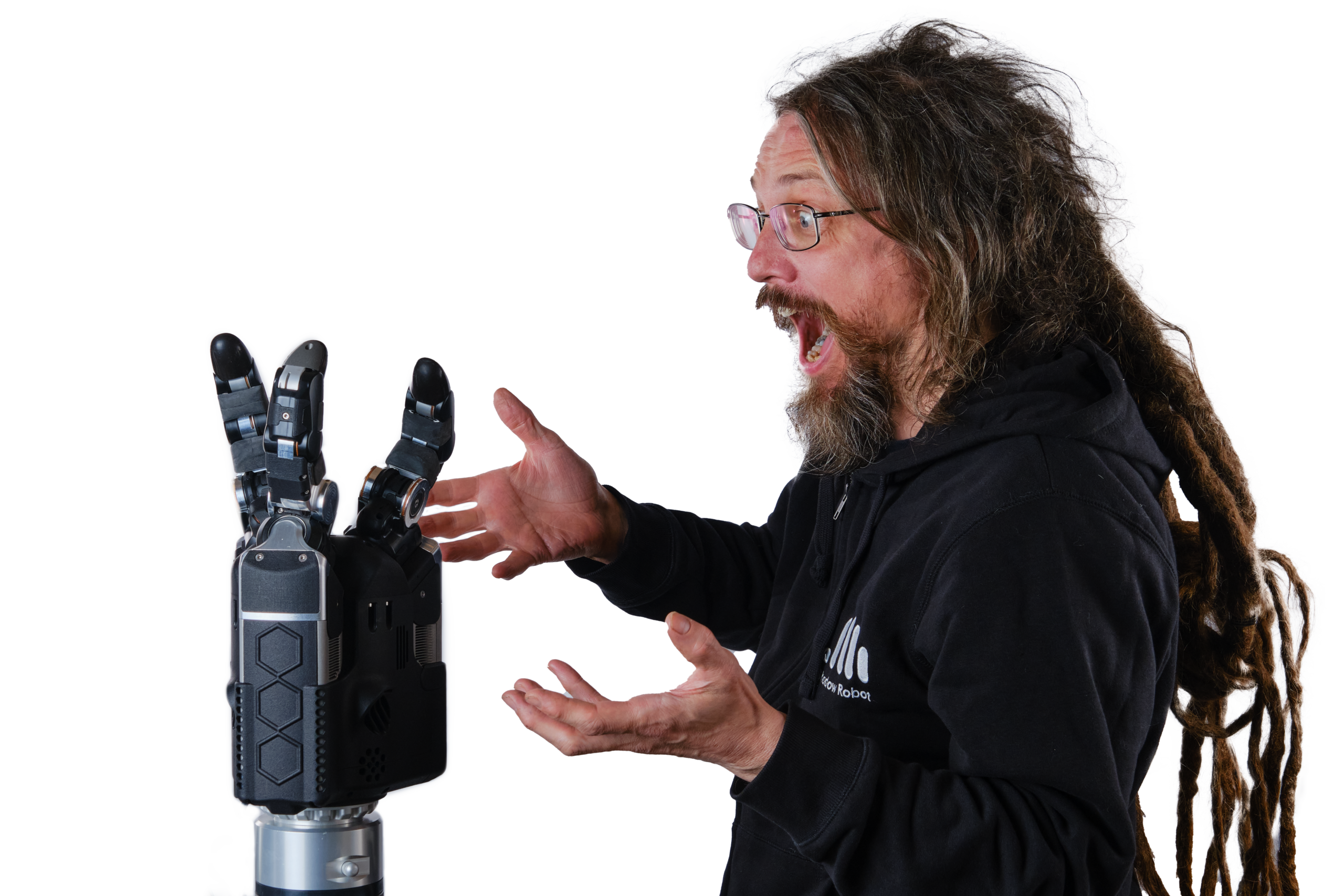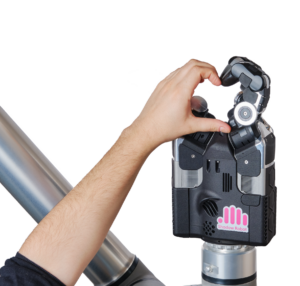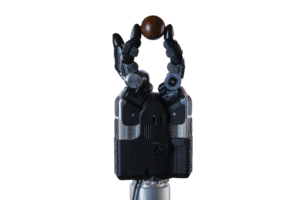Unlocking potential: How DEX-EE is Pushing Forward the Frontiers of Innovation
May 30, 2024
Shadow’s latest innovation is poised to change the way researchers use robots in machine learning.
The new Shadow Hand (DEX-EE) was developed with Google DeepMind in direct response to their need for a reliable, data-rich research tool that can withstand the repeated impacts and long-term experiments in reinforcement learning.
We caught up with Rich Walker, one of Shadow Robot’s Directors, to learn about the company’s commitment to the working at the bleeding edge, and how their new project is pushing forward the frontier of innovation.

Building at the Bleeding Edge
Shadow Robot has always worked at the bleeding edge of technology. The business started with a bunch of talented hobbyists exploring big ideas, and it’s stayed true to that ethos.
Rich explains:
“One of our early customers was NASA – they bought a robot hand from us, partly because ours were really good, and partly because our hands were a lot cheaper than the ones they were building. They used it to ‘inspire’ their engineers, (which we always thought of as reverse engineer!), but we didn’t mind because we sold a hand to NASA.”
The business benefited from this early association – winning recognition, research funding and contract R&D projects.
“When someone wanted to solve a hard problem and they needed some robot hardware for it, we were the people who would step up and say “we can build something for that”. We got an interesting reputation as being people who could build things right at the state of the art in an area that nobody else was building them. And any commercial products in that area were a long way behind the state of the art because they were being built for a volume market.
“It’s a great place to be because it means we’re working with these people who are absolutely at the cutting edge, doing amazing stuff with robotics. They do cool, exciting and interesting things, and we get to build for that and on top of it.”
Solving problems, not building solutions.
Rich is quick to point out that this work is incredibly gratifying, but commercially, it means Shadow doesn’t operate in a volume market.
“There have been a number of occasions where we’ve said we’d be really interested in using our technology for good – finding a place where we can apply it and make things happen. But the conclusion we’ve come to is that we can’t push it. We don’t want to be those people imposing a solution. We want to work together with our customers to solve the problem.
“The Google DeepMind project was a very good example of that pull. They had a very specific problem to solve.”
The research they were doing was destroying the robot hardware they had available before they could collect meaningful results.
“One of the goals with this has been to make something that is reliable enough to do long experiments. If you’re doing a training run on a giant machine learning system and that run costs $10 million, stopping halfway through because a $10k component has failed isn’t ideal.

“Initially we said that we could try and improve the robustness of our current hardware. Or, we can go back to the drawing board and figure out what would make it possible to do the learning you need. What’s an enabling approach here?”
The resulting technology represents a transformational shift in machine learning hardware; an incredibly robust and reliable robot with lots and lots of sensor information, lots of flexibility and capability.
“We spent a huge amount of time and effort testing the various components, iterating the design, trying various things. It was a very integrated project in terms of collaboration and iterative development. The end result is something quite special. It’s not a traditional robot by any means.”
Pushing the innovation frontier
When it comes to machine learning we’re only just scratching the surface.
Rich explains:“Until recently, robot control software was very reliant on having good models of the world, very precise maps of your system, and you worked within that. And you could do amazing things. If you’ve ever seen a production line running you’ll know how precise they are – no one worries about robots throwing a tonne of metal between one another because the control is so exact.

“But what we’re looking at now in the world of AI is this idea coming from transformer technology; the ability to translate, say, text to motion, and that motion is the robot’s physical movement in the world.
The AI community has also discovered that robots don’t need to be humanoid. In fact, working with different embodiments is very powerful. It turns out that if you train your system on three or four different robots, then on the fifth robot, the performance will actually be better than if you just trained on the fifth robot. That was non-intuitive.
“What the new generation of AI tools is letting us do is accept a lot less precision in the world. It’s not so much that this unlocks a use case – it unlocks a potential.
Now we don’t have to face the engineering and software struggles of precisely mapping the movement and capabilities of a human hand onto a five-fingered robot hand. Now the robot can learn from different types of input – human demonstration, a five-fingered robot hand, something that isn’t a five-fingered robot hand. It will take all of that information and learn how to do the task.
“Humanoid robots are now well enough controlled that you can do learning on top of them and not have to do the robotics part.
“There’s been this jump in performance of AI systems, and there are eight or more companies building humanoid robots for use in the real world. There’s been a step up in what’s possible with the robot software. And now we’re able to offer a new capability in terms of the robot hardware. We find ourselves in a very interesting space, where that one-two step has opened up new opportunities for creativity and research, pushing forward the frontier of innovation.”
Focusing on the future
DEX-EE’s focus on manipulation ability gives researchers a new tool to do new things.
‘It’s good for learning,” says Rich. “It’s good for experimentation. Hopefully it’s good for attaching to a robot that’s going to be wandering around and smashing into things. We’re enabling the next generation of robot technology development with a hardware platform that lets researchers do things they couldn’t do before.
“Now you can buy this from us and just use it. It’s got commercial grade engineering, support and service. It’s right at the cutting edge of what’s possible, and we’re on hand to keep it running, and build more. We’re fully engaged in developing long term collaborations with our customers. When they ask, “Can it do this, and this, and this?”, we’ll be right there working with them to figure out how.”